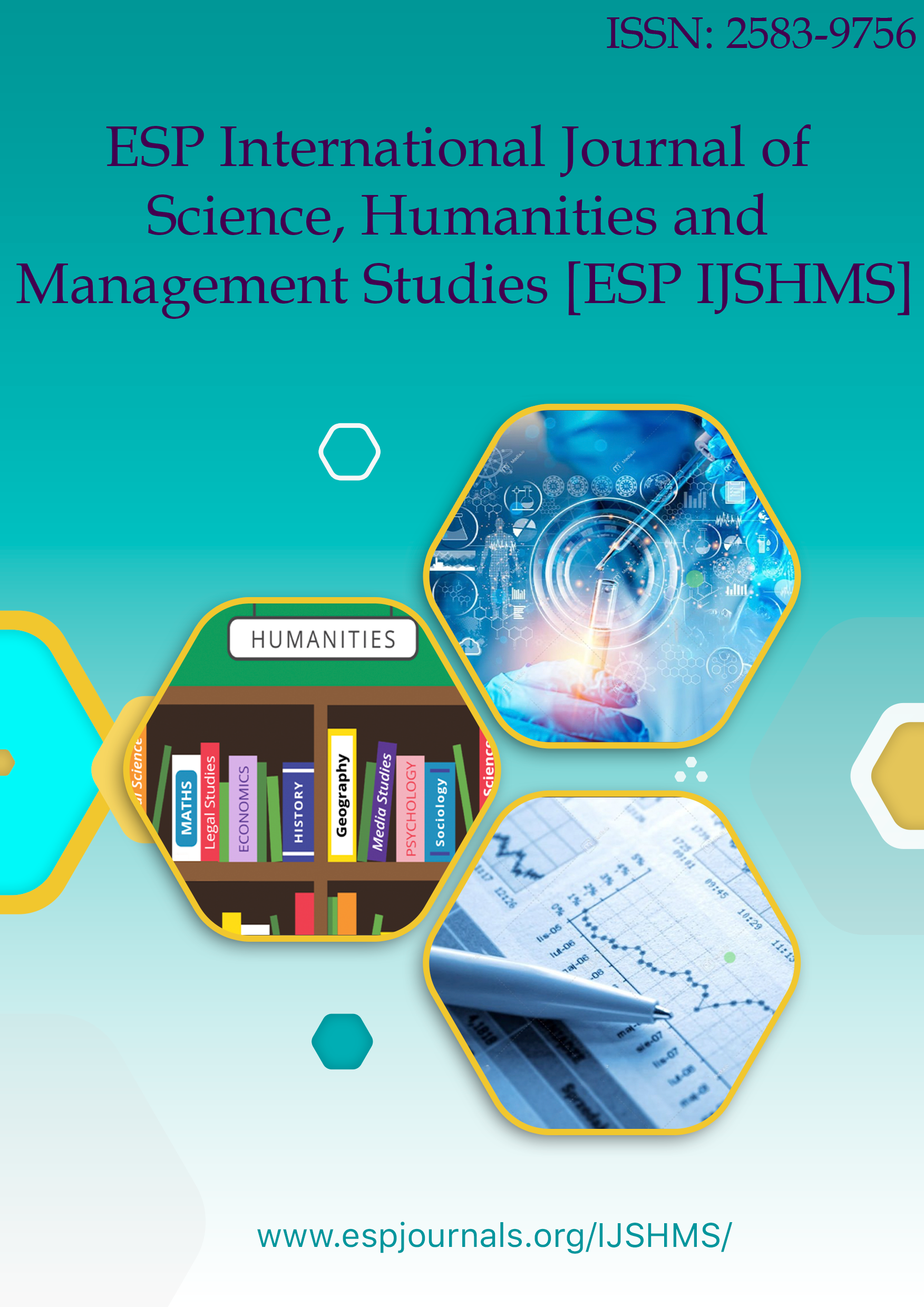ESP International Journal of Science, Humanities & Management Studies(ESP-IJSHMS)
Citation :
Yonas Klemens Gregorius Dori Gobang, Adrianus Nabung, 2024. "Cultural Frictions and Resilience: Insights into Cross-Cultural Communication on Flores Island of East Nusa Tenggara Indonesia" ESP International Journal of Science, Humanities & Management Studies(ESP-IJSHMS) Volume 2, Issue 2: 9-17.
Abstract :
The study delves into the intricate fabric of local cultural conflicts within communities on Flores Island, East Nusa Tenggara, Indonesia, offering insights into cross-cultural communication dynamics. Examining the interplay of cultural symbols, assimilation conflicts, and tensions with modern civilization, the research illuminates the challenges and opportunities in navigating cultural diversity and fostering social cohesion. Drawing on anthropological, sociocultural, and communication theories, the study explores the complexities of identity negotiation, tradition preservation, and conflict resolution in a rapidly changing socio-cultural landscape. It underscores the significance of promoting intercultural dialogue, cultural sensitivity, and mutual respect to mitigate tensions and promote inclusive community development. The findings highlight the need for interdisciplinary approaches and longitudinal studies to comprehensively understand the dynamics of cultural conflicts and communication patterns on Flores Island. Methodological considerations, including sample size and data collection methods, underscore the importance of rigorous research methodologies in capturing the richness and diversity of cultural experiences.
References :
[1] Barker, J. (2004). The human genome diversity project: ‘Peoples’,‘populations’ and the cultural politics of identification. Cultural Studies, 18(4), 571–606.
[2] Bautista-Puig, N., Aleixo, A. M., Leal, S., Azeiteiro, U., & Costas, R. (2021). Unveiling the Research Landscape of Sustainable Development Goals and Their Inclusion in Higher Education Institutions and Research Centers: Major Trends in 2000–2017. Frontiers in Sustainability, 2(March), 1–18.
[3] Chapdelaine, R. F., & Alexitch, L. R. (2004). Social skills difficulty: Model of culture shock for international graduate students. Journal of College Student Development, 45(2), 167–184. https://doi.org/10.1353/csd.2004.0021
[4] Creswell, J. W., & Creswell, J. D. (2017). Research design: Qualitative, quantitative, and mixed methods approaches. Sage publications.
[5] Frey-Ridgway, S. (1997). The cultural dimension of international business. In Collection Building (Vol. 16, Issue 1). https://doi.org/10.1108/01604959710156925
[6] Girik Allo, M. D. (2018). Intercultural Communication in EFL Classrooms. Ethical Lingua: Journal of Language Teaching and Literature, 5(2), 159–170. https://doi.org/10.30605/ethicallingua.v5i2.1036
[7] Javanmardi, E., Liu, S., & Xie, N. (2023). Exploring the Challenges to Sustainable Development from the Perspective of Grey Systems Theory. In Systems (Vol. 11, Issue 2). https://doi.org/10.3390/systems11020070
[8] Lee, & Kanghhe. (2018). Understanding Culture and Intercultural Awareness in Intercultural Communication through ELF. Korean Journal of English Language and Linguistics, 18(1), 30–49. https://doi.org/10.15738/kjell.18.1.201803.30
[9] Nadkarni, M. V. (2000). Poverty, environment, development: A many-patterned nexus. Economic and Political Weekly, 1184–1190.
[10] Naeem, A., Bin Nadeem, A., & Khan, I. U. (2015). Culture Shock and Its effects on Expatriates. Global Advanced Research Journal of Management and Business Studies, 4(6), 248–258.
[11] Nakayama, T. K., & Halualani, R. T. (2011). The Handbook of Critical Intercultural Communication. In The Handbook of Critical Intercultural Communication. https://doi.org/10.1002/9781444390681
[12] Palmer, G. B., & Farzad Sharifian. (2007). 1. Applied cultural linguistics. John Benjamins. https://doi.org/10.1075/celcr.7.02pal
[13] Patrick, O. B. (2020). Effects and Remedies of Culture Shock on Higher Education Students in China. European Journal of Research and Reflection in Educational Sciences Vol, 8(12), 135–145.
[14] Sannino, A. (2010). Teachers’ talk of experiencing: Conflict, resistance and agency. Teaching and Teacher Education, 26(4), 838–844.
[15] Sayle, B. (2015). Culture shock. Innovations in Pharmaceutical Technology, 53, 10–13. https://doi.org/10.18052/www.scipress.com/ilshs.47.116
[16] Turner, P. D. (1997). Document resume c?515 -. Paper, 1, 12.
[17] Webb, R. A. F. P. (1994). The children of Mori Kereng: education and development strategies in Manggarai, Flores. Philippine Quarterly of Culture and Society, 22(2), 141–158.
[18] Weiland, S., Hickmann, T., Lederer, M., Marquardt, J., & Schwindenhammer, S. (2021). The 2030 agenda for sustainable development: Transformative change through the sustainable development goals? Politics and Governance, 9(1), 90–95. https://doi.org/10.17645/PAG.V9I1.4191
Keywords :
Cultural Conflicts, Cross-Cultural Communication, Identity Negotiation, Tradition Preservation, Social Cohesion.


 : 10.56472/25849756/IJSHMS-V2I2P102
: 10.56472/25849756/IJSHMS-V2I2P102